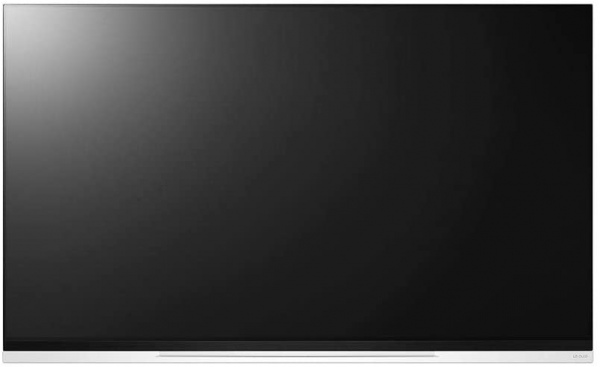LG
Oled TV LG 55E9: a design and a soundbar to make a difference
Aprox. 1429€
See specificationsThe LG 55E9 television takes up the image quality of the LG C9 and differs above all by its original design and an improved audio part. Sufficient contributions to justify the price difference between the two models?
Positive points
Image quality.
Excellent colorimetry in HDR Cinema mode.
Faithful HDR processing.
Infinite contrast.
Viewing angles.
Neat design.
Always efficient α9 processor.
Responsiveness of Oled technology.
Excellent delay on display.
HDMI 2.1 compatibility (VRR, ALLM, eARC).
Consumption down compared to last year.
Bad points
Non-backlit remote control.
Brightness peak in HDR mode.
Our review
Presentation
Like the LG 55C9 of which we tested the 65 inch version (LG 65C9), this LG 55E9 Oled TV has a 10-bit 55 inch Oled panel (≈140 cm) displaying an Ultra HD definition of 3 840 x 2 160 px whose characteristics are logically identical: a maximum brightness around 750 cd / m², 99% coverage of the DCI-P3 color space, infinite contrast and zero remanence time. It is powered by the second generation α9 processor (Alpha 9) and the WebOS 4.5 operating system, slightly revised compared to last year for clarity. It stands out with its original design revealing a glass panel on the lower part and its 4.2 audio system with a power of 60 W against 40 W for the C9.
The LG OLED55E9 TV is launched for around 2,800 €, 300 € more than the LG 55C9. The 65 inch version (about 165 cm) (LG OLED65E9) is displayed at 3,800, again € 300 more than the public price of the LG 65C9.
All the brightness and colorimetric measurements mentioned in this article were carried out with a SpectraCal C6-HDR probe and the CalMAN Ultimate software.
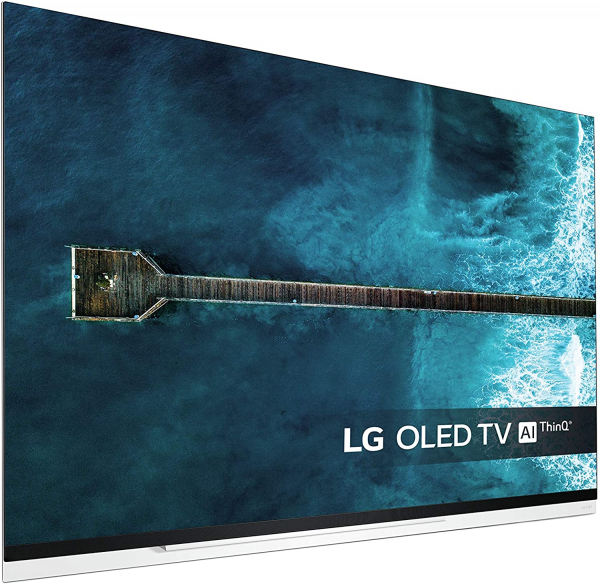
Image quality
The image quality of this LG 55E9 television is identical to that displayed by the LG 55C9 which we have already tested. In general, the quality in SDR is excellent. This TV displays true colors, a stable gamma curve and a color temperature that meets Hollywood standards. the contrast is still infinite and the image processing is in very slight improvement compared to the models of last year. We refer you to the full LG OLED65C9 test for detailed results.
LG 65C9 television: the Oled improves further
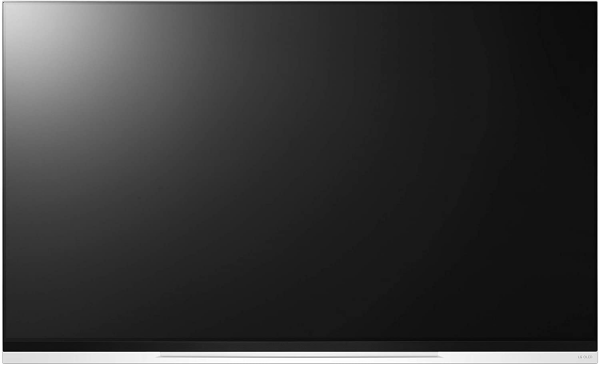
HDR
As with SDR image quality, the LG 55E9 has the same HDR image quality as that of the LG 65C9. This LG television perfectly manages HDR signals and avoids clipping by smoothing the signal from 70% in order to restore details in high brightness. Like all Oled TVs, the weak point remains the maximum brightness measured at 710 cd / m². The colors in HDR remain perfect and the colorimetric coverage of the DCI-P3 color space remains the best on the market. Visit the test of its twin, the LG 65C9 for the full results.
LG 65C9 television: the Oled improves further
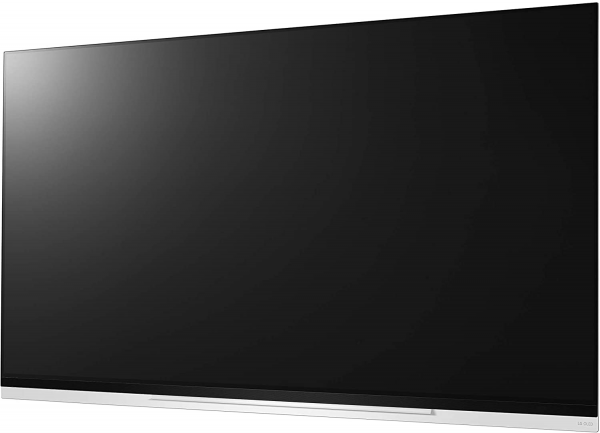
Video games
This TV is an excellent companion for video games thanks to a zero retention time and a display delay reduced to 13 ms - the best on the market. We can just blame him for a lack of color accuracy with manual settings, but fortunately, the arrival of Auto Low Latency Mode (ALLM) reduces the delay in the display while selecting the Cinema image mode. and therefore keeping the right colors. More information in the LG 65C9 test.
LG 65C9 television: the Oled improves further
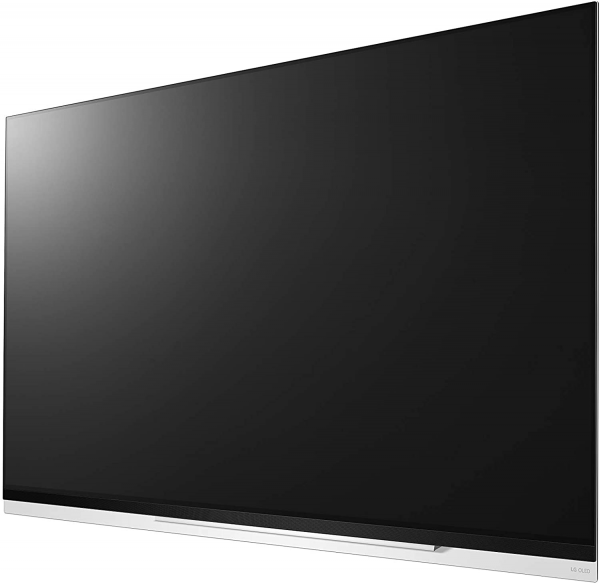
Clouding
Oled technology is simply devoid of clouding since it does not use a light-diffusing filter, unlike LCD models. The homogeneity of the brightness on the screen is excellent, since we have measured the average difference in uniformity of white over the entire screen of 55 inches at 6%. This excellent result is again explained by the use of Oled technology.
A little word all the same about the marking problems that some users face. Extensive tests have shown that the marking of modern Oled tiles is limited during everyday use. On the other hand, the chains of continuous information displaying bands with saturated colors (red, blue or green) can clearly pose problem, in particular when the brightness is pushed to the maximum. This risk exists and cannot be totally overlooked. Remember that you must switch off the television using the remote control and that it is not recommended to disconnect it completely from the power. The television performs maintenance operations on the screen when it is in standby in order to preserve uniformity and precisely to avoid marking problems.
Ergonomics
The LG 55E9 is clearly one of the most beautiful Oled TVs on the market. With its glass slab that licks the TV cabinet, it is reminiscent of the Sony Oled 65A1 and Sony 65AF9.
The LG brand appears only at the bottom right of the TV in a very furtive way; a good point for design. We can also see the integrated sound bar (more information in the audio part) which is the particularity of this TV.
Unsurprisingly, the edges of the screen are still very thin, as is the case on all Oled TVs on the market. The finishes are also exemplary, but we expect no less from a TV in this price range.
If the slab in itself benefits from an extreme thinness on the upper part, the television displays a thickness of 5.3 cm on the lower part carrying the electronics. The dimensions on the TV stand are always linked to the size of the stand, the depth of which is limited to only 22 cm. This TV is thus perfectly comfortable on our reference TV stand measuring 160 x 40 cm.
At the back, we find the power supply on the left and the connectors on the right. Compared to the LG 65C9, part of the connection is hidden behind a cover on the right.
The imposing stand incorporates a fairly efficient cable passage which allows you to collect them all at the back of the TV. A plastic cover hides everything.
The LG OLED55E9 television includes the connections, the interface, the anti-reflective treatment and the remote control of the LG 65C9 that we tested. We therefore refer you to the latter's test in order to learn more about these specific points, in particular the start-up and recovery times or even for the Magic Remote.
Recommended article: LG 65C9 TV: the Oled is still improving
Audio
The LG 55E9 has a more advanced audio system than that present on the LG 65C9 that we tested. The LG 55E9 thus embeds four broadband speakers on the front and two woofers on the back for a total power of 60 W, against only 2 speakers and 2 boxes on the C9 for a total power of 40 W. In the end, the sound is generally richer and more detailed and also benefits from increased power. This TV displays a nice frequency response curve between 55 and 20,000 Hz and we can just blame it for a little hollow in the high mids around 4,000 Hz. The audio system present in this TV is all the same of the best on the market, but it will not replace a dedicated soundbar, more powerful and better in terms of spatialization.
Consumption
On our test pattern calibrated at a brightness of 150 cd / m², the LG OLED55E9 consumes 83 W, ie a relative consumption of 99 W / m², just below the average of 100 W / m² recorded on all televisions tested. The consumption of Oled televisions remains higher than that of LCD televisions equipped with a backlight system and which consume almost half as much, like the Sony 65XG8505 which is satisfied with 56 W / m² or the Samsung QE55Q6FN and its 61 W / m². Standby consumption is less than 1 W.
Conclusion
With the disappearance of the G range, LG E9 televisions become de facto the most "OLED" models of the Korean manufacturer. The audio part, if it is slightly improved, is not enough to justify the price increase and above all, it does not equal a mid-range sound bar. On the other hand, for a price slightly higher than that of the C9, you have a slightly more original design than the majority of other Oled TVs. This is surely why you will choose the LG E9 over another, the image quality being always as excellent.
Specifications

